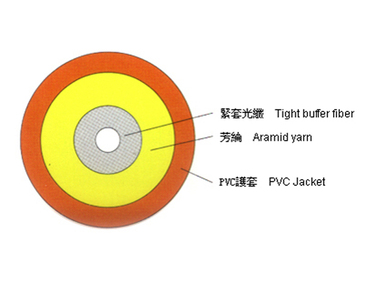Fiber cable
More dynamic than ever
Make no mistake, data centers are a more dynamic environment than ever before, with data center infrastructure management (DCIM) tools and sophisticated sensors assisting IT staff to monitor power and thermals, and manage asset utilization at a level that has made the contemporaneous use of spreadsheets and Stanley tape measures seem like Stone Age tools. That said, the best way forward-looking data center operators can support SDN, edge computing, and AI initiatives, as well as 5G, is by deploying cabling infrastructure that is adaptable and scalable. What may seem to be enough capacity today might not be next year, next month, or even next week. Being able to add capacity through a scalable solution without having to redo the install from scratch will save a lot of time, effort, and money when the time for implementation arrives.
Another way cabling infrastructure can support these initiatives is by being standard-driven. By complying with standards such as the Telecommunications Industry Association’s (TIA) TIA-942 - was the first standard developed by an accredited standards organization that specifically addressed physical data center infrastructure - or various Institute of Electrical and Electronics Engineers (IEEE) standards, data cabling suppliers can ensure flexibility through interoperability of the solution with other providers, which ultimately benefits the end-user.
Replacing the fridge
By far the most arduous challenge regarding optical fiber connectivity in the data center is managing the immense amount of fiber, whether it is in the demarcation point of the entrance room or within the facility itself. What used to be a few dozen or hundreds of fibers is now a few thousand. The trend we’re now witnessing is the revamping of the entrance room to eliminate outdated proprietary splice closures, affectionately known as “fridges,” so-called because of their physical resemblance, and replacing them with modern, more efficient, and user-friendly high-density fiber management systems. Obviously, the room’s dimensions are fixed, so the only solution to pack more fiber into the same footprint is to reduce the space the equipment takes and manage the cabling more intelligently.
Fortunately, there are now modular fiber distribution frames designed to install in any standard 19 in rack or cabinet that provide high fiber count, high-density fiber management, and termination, including complete vertical data cable management, slack management, routing, and strain relief feature all within the width of a standard 19 in the rack.
Of course, the need for sound cable management and reliable connectivity isn’t limited only to the entrance room of the data center. Equally critical is the equipment room, which contains the main distribution frame — the primary location for backbone cabling — along with phone systems, power protection, uninterruptible power supplies (UPS), LAN equipment, and any file servers and data processing equipment, including the mechanical terminations.
The work area is the point at which the network interacts with staff on a floor. This is where horizontal cabling distribution enables the interaction between the workstation and the telecommunications room. The telecommunications room houses equipment, cable terminations, and cross-connects that serve a specific office area, and/or floor. The telecommunications room is the critical point between the work area and the equipment room or main cross-connect, linked through backbone cabling connecting the equipment room to the telecommunications room, and horizontal distribution connecting the telecommunications room to the work area.
Telecoms room serves a floor
The telecommunications room is typically a floor-serving room for horizontal distribution and should be designed and equipped in compliance with the American National Standards Institute (ANSI) TIA-569-B protocol. TIA-569-B provides design standards for the entrance room, equipment room, and telecommunications room with respect to construction and environmental controls. One of the key features of TIA-569-B is the necessity for pathway diversity and redundancy to ensure continuous operation in the case of a catastrophic event.
Considering the investment in time and money that will be required to quickly get up to speed, and the risk of missed opportunities now is the time to prepare the data center with a cabling infrastructure that is adaptable, flexible, and scalable to the requirements of the aforementioned newly arriving technologies. The future of your organization’s digital transformation, or that of your customers, will almost certainly depend upon it.






 English
English 中文
中文



